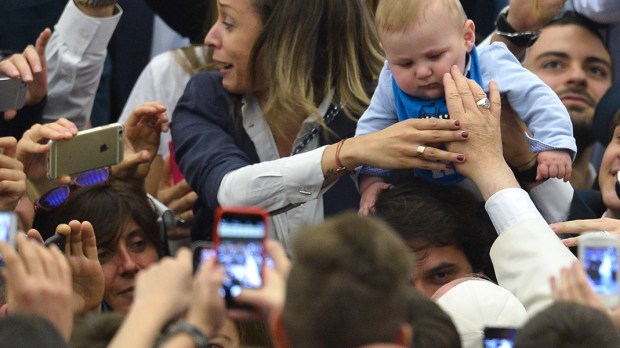Saint Francis, G.K. Chesterton wrote, can be understood in three ways.
The first is as a man who “anticipated all that is most liberal and sympathetic in the modern mood: the love of nature; the love of animals; the sense of social compassion; the sense of the spiritual dangers of prosperity and even of property.”
The second is as a man of the stigmata and skulls, an ascetic who emphasized the liturgy and mortality – “as dark a figure as St. Dominic”.
The third is as both.
Chesterton argued that to really understand Francis as he was – and not as we want him to be – we need to confront both his “gaiety and austerity”. We need to see the man of
, whose radical activism was inseparable from his faith. Francis looked out at the world with great love, but also denied himself basic pleasures. Like many great saints, his passion for creation was fueled by the sacraments. His “Canticle of the Sun” talks of “mother earth” and “brother wind”, but also of “sister bodily death” and “mortal sin” (“woe to those who die” in it, he warned). Some would reduce Francis’ compassion to personal eccentricity; most would inflate it until there’s little room for anything else. But Francis was who he was: not a religious stoic or a secular hippie, but a fool for Christ.Chesterton’s analysis shouldn’t be far from our minds as Pope Francis, the first pope to adopt the name, visits the United States. Americans are a pragmatic people – we like to split things in two like firewood and put them in their place, especially in politics – so it’s no wonder that we find ourselves in the same binary dilemma with Francis. Political liberals see a “breath of fresh air” for a backwards church, a progressive pope who (despite some inevitable “far-right” positions) cares about the environment, warns us about unfettered capitalism, and declares “who am I to judge?” Meanwhile, political conservatives laud Francis’ leadership on family, simplicity, and human dignity, but push back against his “far-left” inclinations as fallible at best, dangerous at worst.
One of the great ironies of the digital age is that it produces echo chambers as quickly as it produces objective information; and in America, these two spins on Francis are bounced around endlessly in them. We see a Francis who is allowed to say too little, emptied of his religious soul, or a Francis who is allowed to do too little, cordoned off from its full expression. Each offers us a piece of his mission, but not the whole picture; each cuts off a stack of firewood and calls it the forest.
But to go beyond the headlines and encounter his interviews and encyclicals is to encounter a man who – like the saint, and like Jesus himself – doesn’t much care for sacred political cows. Even to declare him the “ultimate Washington outsider” is misguided, because it still places him within the horizon of our political life. Peter Leithart is right that Francis doesn’t just transcend our politics; he’s “operating in a quite different intellectual and moral universe” – “that of the church”.
This is the genius of Pope Francis, hiding in plain sight: “thinking with the church.” In its literal sense, this means continuity with his theological predecessors. Maybe the biggest blind spot in the coverage of Francis is that, on substance, everything he’s said aligns with Benedict XVI and John Paul II. In interviews, Francis has also emphasized that thinking with the church means thinking with “all the faithful”, not just theologians. With statements like that, it’s no wonder that Pope Francis has been called “the people’s pope”. More than any other pastor in recent history, he smells like his sheep.
But thinking with the church also means learning to see through the world’s false contradictions. On the surface, Laudato Si’ brings together vastly different social views – justice for the poor, the abolition of abortion, the fight against climate change, suspicion of the “technocratic paradigm”. His first American speech delivered at the White House was no different, pledging his support for everything from the institution of marriage to the plight of immigrants. This ease about opposites permeates the church, which extols both faith and reason, justice and mercy, and truth and love without ever succumbing to an “either/or” mentality. “The Church not only kept seemingly inconsistent things side by side,” Chesterton wrote elsewhere, “but, what was more, allowed them to break out in a sort of artistic violence otherwise possible only to anarchists.”
These tensions might remain tensions if not for the ultimate paradox driving their unity. With the joy of the Gospel of God-made-man, Saint Francis felt called to love the unlovable, to become a channel of peace and freedom, and to die to self like a grain of wheat, because only then does it bear fruit. This is the message; it wasn’t uncontroversial then, isn’t now, and never shall be. And Pope Francis is here in America to do one thing and one thing only: to follow in those ancient footsteps and invite us to “come and see.”
Matthew Becklo is a husband and father, amateur philosopher, and cultural commentator at Aleteia and Word on Fire. His writing has been featured in First Things, The Dish, and Real Clear Religion.

